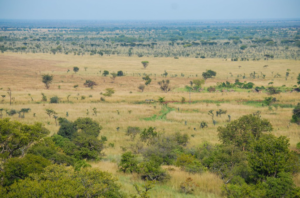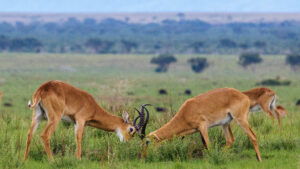At the extreme North eastern Part of Uganda lies a precious jewel Pian Upe Game reserve. It is the second largest conservation area in Uganda after the Murchison Falls National Park and it is located in the Karamoja sub-region in Nakapiripirit District, northwest of Uganda. It also covers an area of 2788 square kilometers.
This wildlife reserve is under the Mount Elgon Conservation Area Management and is home to two main pastoralist tribes that include the Karamojong and the Kalenjin-also known as the Pokot in Kenya.
Uganda is endowed with numerous attractions which draw different people from all walks of life. Among these are National game reserves which are outstanding because of their uniqueness

Pian Upe game reserve can be accessed via road from Kampala city via Mbale to Soroti road, and this will take you approximately 8 – 9 hours and about 5 – 6 hours from Kidepo national park to arrive at the beautiful scenery of the Pian Upe game reserve.
While visiting the Pian Upe game reserve you need a particularly favorable time that will enable you to enjoy your trip to this amazing place, therefore the best time to visit this wildlife reserve is from January to March when the vegetation is dry so that you can have a clear view of the animals and birds in this place. Pian Upe harbors several wild animals that are amazing and unique in sight, the animals are categorized as Primates, carnivores, and Ungulates.
Among the Carnivores there are cheetahs, the fastest animals that are the most populated in this game reserve, Roan antelopes, wild cats, spotted hyenas, jackals, serval cats, and civets.

The Ungulates on the other hand include Topi, Cape buffalo, Common eland, Roan antelope, Blue and common duiker, Günther’s dik-dik, Klipspringer, Waterbuck, Ugandan kob, and Hare among others.
The reserve’s ecosystem has also attracted several Different bird species that live in this place like the rare Ostriches, superb sterlings, Green bita, secretary bird, the rare shoebill stock, Abyssinian ground horn bill, and the fox weaver bird that will leave you in awe
Pian Upe is one of the most fascinating game reserves because it is dominated by bristle species, thatching grass, short trees and shrubs, lemon grasses, and beard grasses among others.
Pian Upe is blessed with savannah plains, Acacias, sausage trees, and rocky ridges. These are surrounded by three mountains which are Mount Elgon, Mount Napak, and Mount Kadam. The presence of these Mountains and activities like Hiking to the Nepedet cave is such wonderful experience.
The interesting background about the Nepedet cave is a popular ancient recreational place for the first inhabitants of this place who used to gather some paintings of different animals, and some paintings like the roan antelopes, and baboons are still visible when you visit the cave.
The community around the Pian Upe game reserve comprises the Karamojong people who have a unique culture and are majorly pastoralists, if you have a cultural tour in one of the local communities of Karamojongs, you will be offered some traditional music and their famous Edonga Dance.
When it comes to accommodation, Pian Upe game reserve is still under development therefore it has one mid-range accommodation facility called karamoja overland camp, this facility is self-contained with electricity and showers. However, tourists can camp around the park with their tents or hire some tents from the park.
FUN FACT
Pian Upe acquires its name from the community Pian stands for the clan among the Karamajongs of North-eastern Uganda, while Upe stands for the Kalenjin-speaking pastoralist community of the Karamajong who are
said to have originated from the Pokot tribe in Kenya.
Pian means “calm-hearted people” while Upe means “Enemy”. Therefore, the two words combined, you get “Friendly enemies”.
The south of the reserve was designated as Debasien Animal Sanctuary in 1958. A government-led project to convert land just south of the Girik River for agriculture threatened the viability of wildlife conservation in the whole area. In 1964 the area was expanded northward and renamed Pian-Upe Game Reserve.
